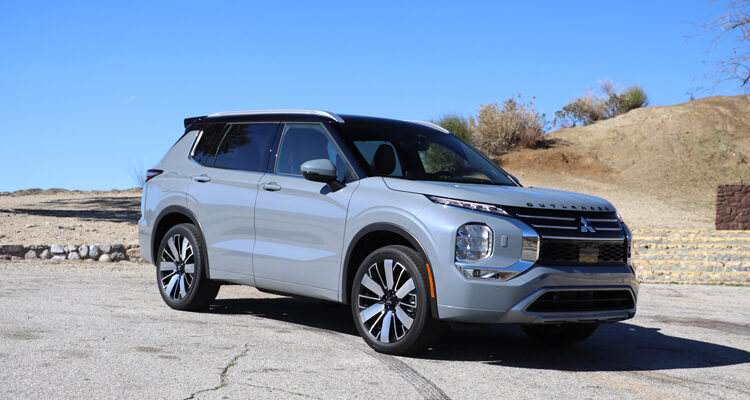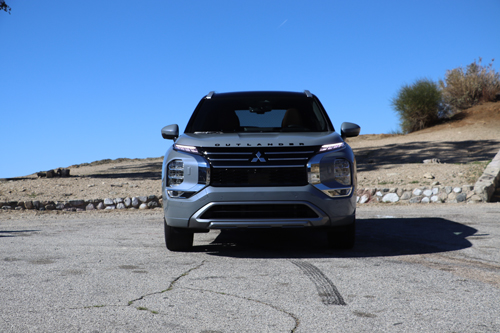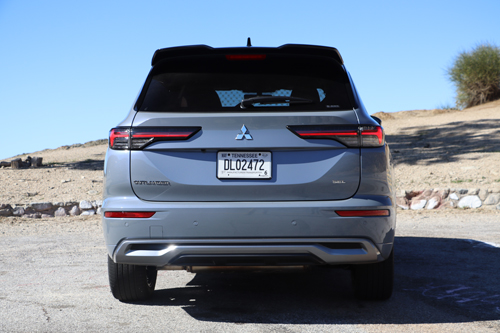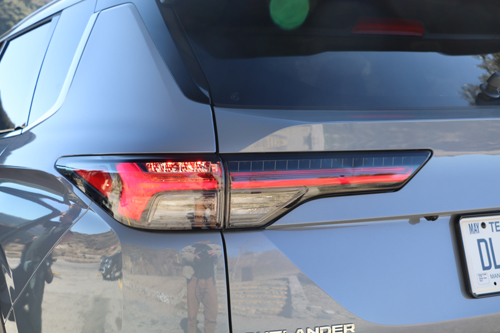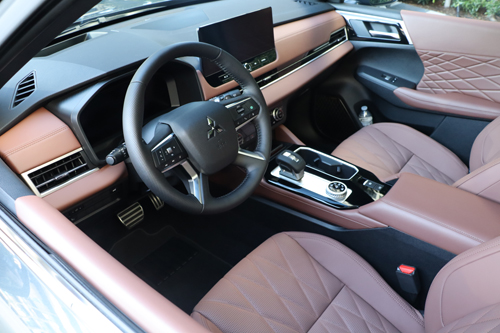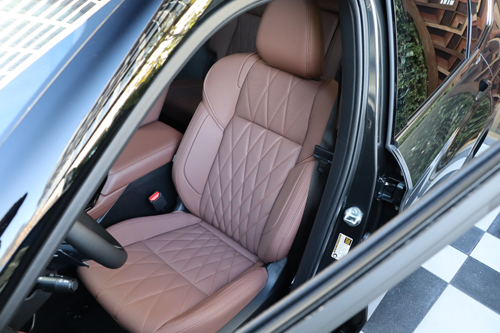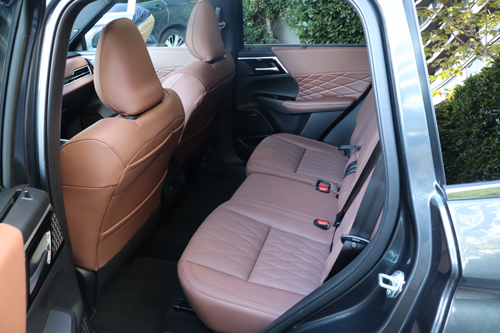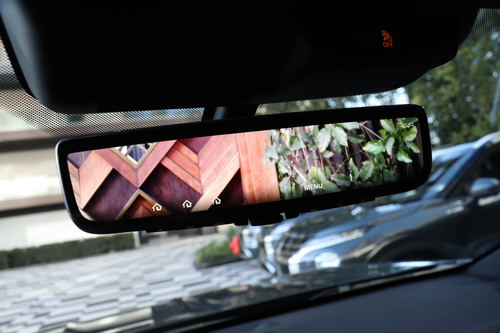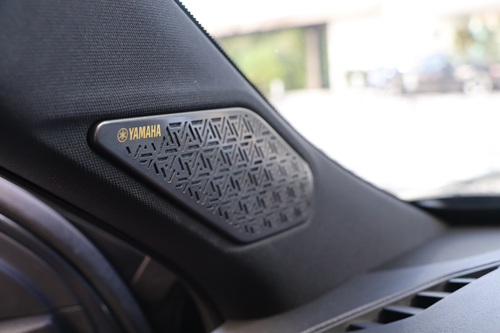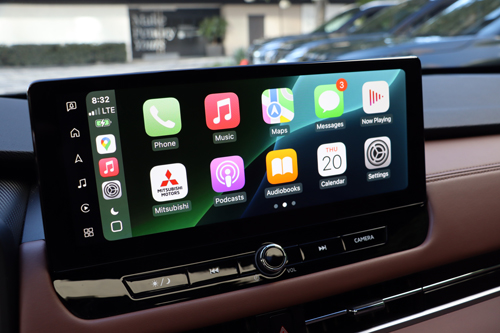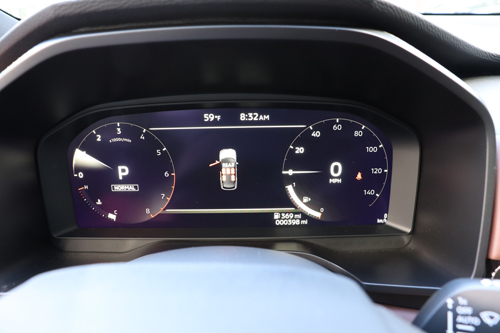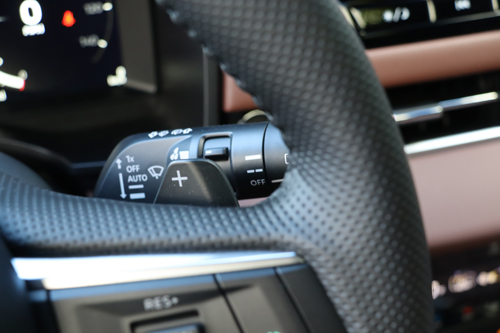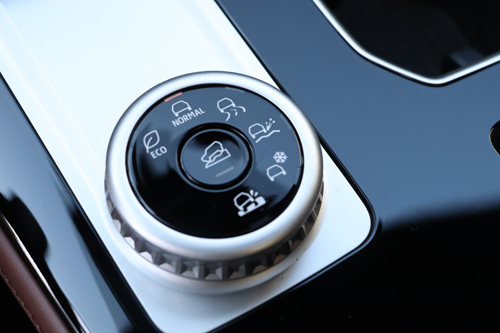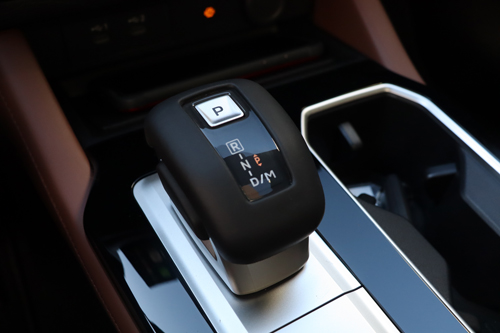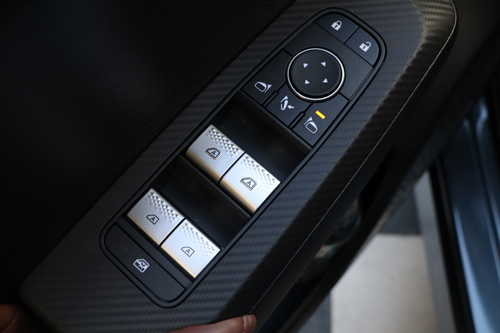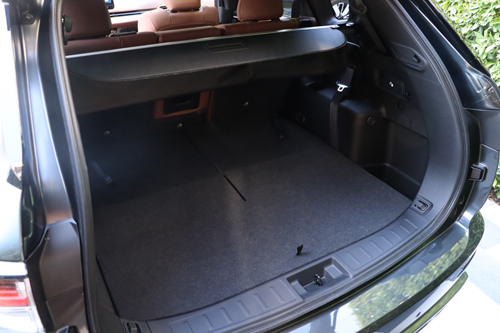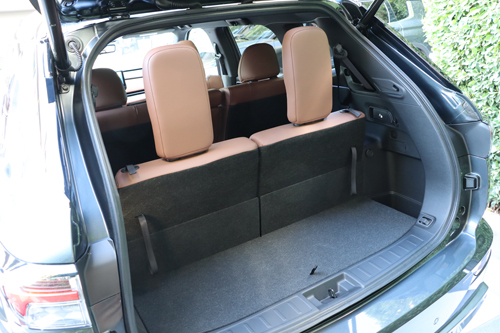For 2025, the Mitsubishi Outlander has been given a redesign, as well as a dollop of new interior tech that helps bring an already very attractive package to another level. The Outlander continues to be Mitsu’s bestselling model in Canada, outselling the next-in-line RVR almost 2-1 in 2024. So, if it doesn’t look all that different on the exterior, that’s because for one, it was comprehensively redesigned two years ago and for two, well, the sales show that people seem to like the styling.

Not that it hasn’t been given a few pinches here, a few pulls there; the taillights, for example, are now LED as standard and come with a smoked finish. The upper grille has been given new styling as well and the Moonstone grey colour seen here is an all-new choice. A few new wheel selections – the 20-inch items on our tester are one of the new styles; they do the job nicely – and that’s pretty much it when it comes to exterior styling adds for ’25. That means it remains one of the more unique-looking crossovers in our market – in any market, really – doing a great job of masking that this particular Mitsu CUV shares a whole heck of a lot of its bits with the Nissan Rogue. Which, incidentally, is also a bestseller in its line-up. So, we have a good starting point, then although it bears mentioning that these changes aren’t coming to the PHEV model just yet.
The Outlander’s next trick for ’25 takes place inside, and you could say it’s the car’s coupe de grace. Once again, though, it’s not really about new styling so much as it is about new content. There central display no measures 12.3” as standard (an eight-incher was the previous starting point) and it’s matched with a 12.3” digital gauge cluster as well. You can select two different gauge types here, one of which is unique in that it swivels the tach and speedo 90 degrees, with the digits rolling by slot machine-style.
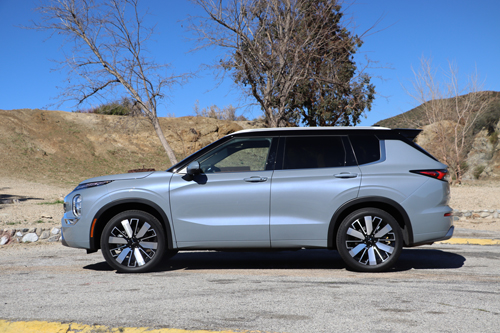
They’ve also added Google Built-In tech so now, the native navigation system is Google Maps and you have access to Google Assistant, Spotify and the ability to login to your own Google account. The top-sec GT Premium, meanwhile, gets semi-anline leather (there’s also cloth and microfibre options) seating with diamond-printing as well as ventilated front seats, which is a Mitsubishi first.
According to Mitsubishi, however, the real big add for ’25 is Yamaha audio. That marks the first time we’ve seen an audio system from the famed Japanese brand (one that, incidentally, is about the same age as Mitsubishi) in a car in North America. It comes with eight speakers as standard and 12 on higher trims, which get a subwoofer plus additional dash-mounted tweeters. That’s the hardware; on the software front, Yamaha’s sound engineers have tuned more than five presets as well as three unique sound profiles that are elevated takes on the speed-sensitive volume tech we’ve seen on cars for quite some time now. Basically, as speed increases road, wind and engine noises tend to increase as well. So, to combat that manufacturers will automatically increase radio volume. The Outlander can do that as well but more than that, it can modify the sound for a rainy day to offset the smacking of water droplets on the windshield or the slapping of wipers, or for when you have the A/C cranked.
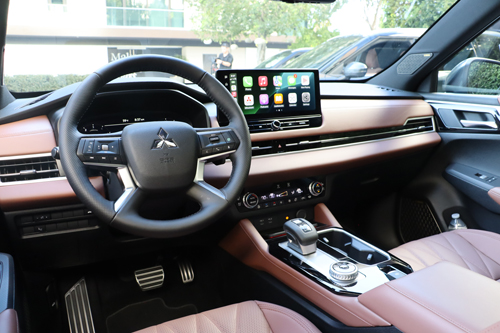
It’s neat stuff but the problem I have is for all the time spent on engineering this sound system (and the money invested therein), the main takeaway is the software stuff, less so the actual quality of audio. Make no mistake – the sound quality is good, but let’s just say I didn’t feel like the guy on the Maxell cassette boxes.
But then, I do wonder how much that actually matters to buyers. For every audiophile who can tell that the lead guitarist is playing a White Strat, there are thousands who just want to access their Bon Jovi playlist as easily as possible; the chance to say you have a unique Yamaha audio system in your CUV is a neat ancillary benefit, and little else.
For ’25, every Outlander trim comes standard with three rows of seating; the third row is small as this is a compact-to-mid-size crossover and in this segment, that’s OK. The Toyota RAV4 and Honda CR-V, for example, don’t offer a third row and nor does the Ford Escape. It’s nice to have the extra seats if not to regularly move a family of four or five, but to have the space for the occasional carpool. Still; I do wish the headrests flipped forward – as it stands right now, you have to manually remove each one. It’s nothing new, really; the Outlander as always had kind of a strange third row.
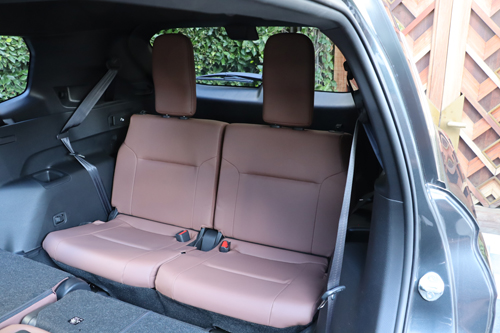
There has been no changes to the powertrain for ’25 – it remains a 2.4-litre naturally-aspirated four-cylinder making 181 horsepower and equal amounts of torque. That’s attached to a continuously-variable automatic transmission that gets a manual mode with paddle shifters, even though there are no gears to shift, per se. The CVT helps smooth out acceleration so the Outlander feels just a little quick than the numbers suggest, and it is a fine highway companion.
While the powertrain has been left alone, Mitsu as tweaked the suspension for ’25 by changing the springs and damper rates and fitting slightly smaller anti-roll bars. The goal was to deliver a smoother ride and for the most part, they’ve succeeded. Cracks and small repetitive bumps – the types of road imperfections you’ll come across regularly in cities and also on highways and biways – but larger bumps are felt just a little more than I’d like. Smaller wheels than the 20s fitted to our tester would likely change things in this regard.
Overall, this mid-cycle refresh for the Outlander while not overtly changing all that much, has kept the important stuff intact. The third row, the spacious interior, the looks (for some) and the value is all there, and shouldn’t be slept on.



